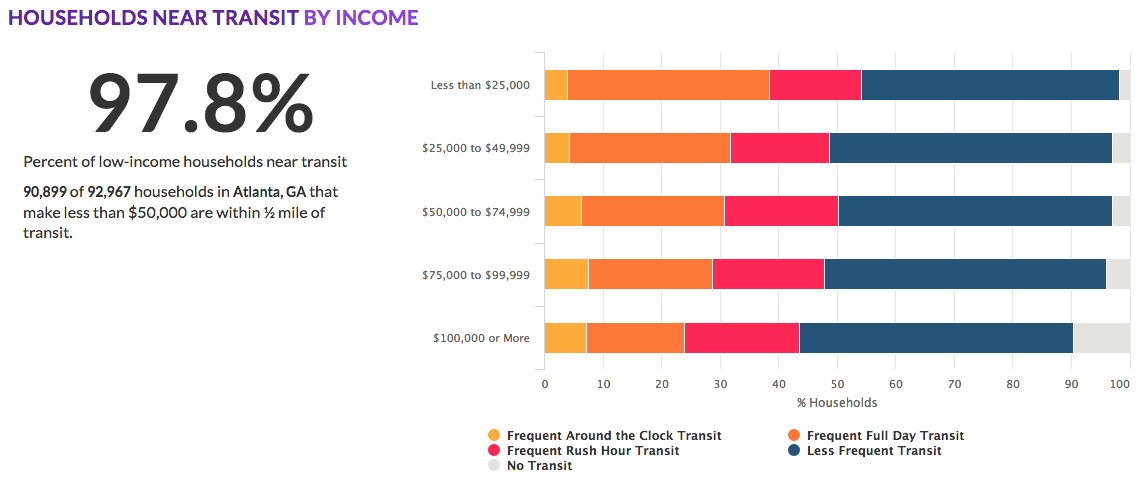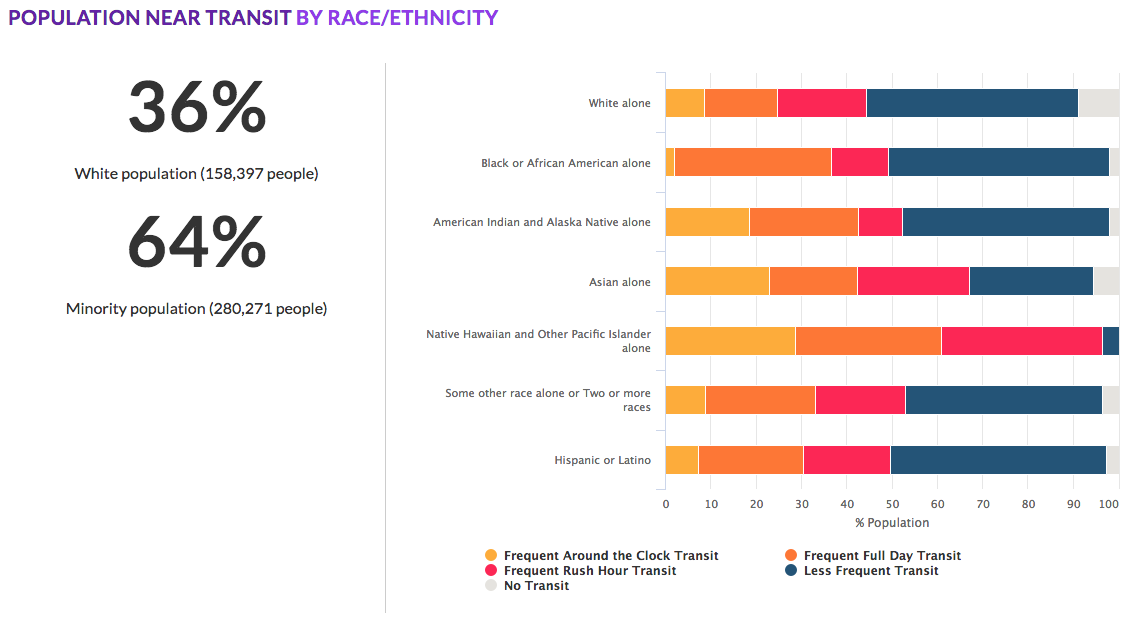AllTransit is an interactive web-tool, designed to help residents explore transit in their cities with enhanced precision, particularly in the realm of transit efficiency. AllTransit’s new factsheet helps us evaluate levels of transportation by city. The factsheet is comprised of infographics that help visualize this complex set of data with clarity.
We look to Atlanta for a case-study.
While most residents in Atlanta residents reside within a half-mile of public transportation, it is important to evaluate each one’s proximity to high-frequency transit (i. e. access to a bus or train every 15 minutes).
Throughout history, we have watched the effects urban revival on lower-income residents. Scenarios often result in displacement or homelessness. Luckily, coupled with preservation of affordable housing, a robust transit system can reduce their living expenses. The graph below denotes than over 54% of Atlanta households that make $25,000 or less have access to high-frequency transit. Among these, 4% have 24-hour access to transit, while an additional 34% have access every 15 minutes all day (7am-10pm).

Over 54% of Atlanta households that make $25,000 or less have access to high-frequency transit.Among these, 4% have 24-hour access to transit, while an additional 34% have access every 15 minutes all day (7am-10pm).
64% of those that live within a ½ mile of transit are minorities, primarily African Americans. White residents have the lowest share of access to high frequency transit – partly due to their choice of housing in neighborhoods like Paces and Chastain Park. While equitable on the surface, some areas still need attention. In particular, the installation of high-frequency transit in neighborhoods with large minority populations potentially benefit residents who work more unconventional hours.

Population near transit by race/ethnicity.
Another important feature is renter and owner populations. In Atlanta, the renter population is significantly higher than that of the owners. This trend continues to increase, as well (4% within the 5 years). More renters are taking public transportation to their jobs and doing so more frequently. Using the graph below, we see that every other renter has access to high frequency transit during the rush hour commute.

More renters are taking public transportation to their jobs and doing so more frequently.
As our cities grow, the hidden problems and opportunities associated continue to proliferate. With accessible data made more available, more cities are able to keep pace with an increased inflow of information and further, navigate the future with enhanced precision.